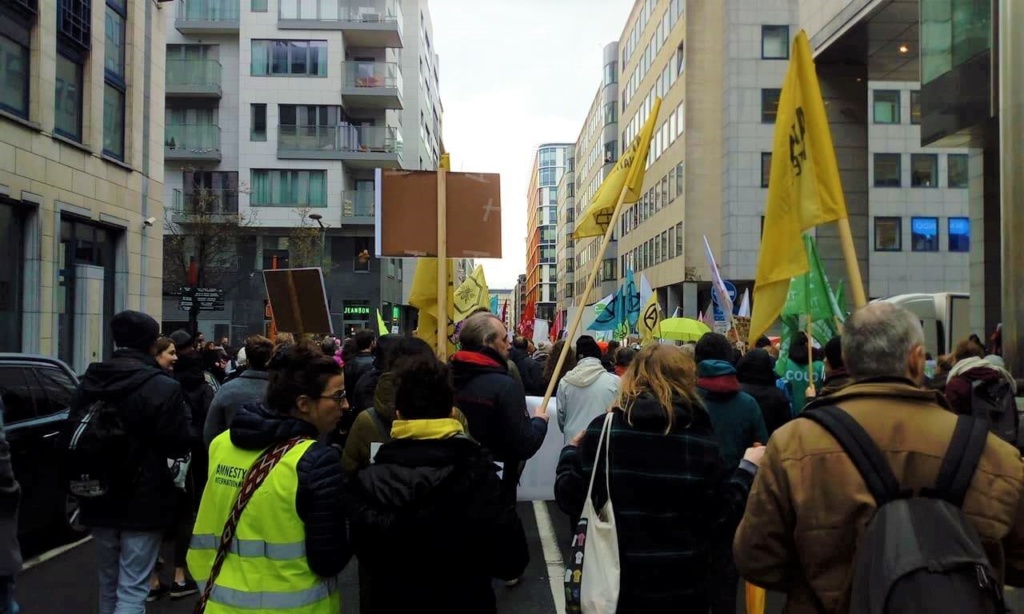Does the European climate law sign the starting point of a battle for carbon neutrality?
06 March 2020 /
Thomas Rambaud 4 min

The European Green Deal and its first shortcomings have already been largely covered by Eyes on Europe editors. One of my previous articles mentioned the need to keep a close look at the news because there are several steps to follow. My colleague Sami Chauvet has already shown what the consequences of the Green Deal would be on the EU-Mercosur agreement, showing a certain incompatibility. On March 4, the President of the European Commission, Ursula von der Leyen, and the Vice-President responsible for the deployment of the Green Deal, Frans Timmermans, unveiled an important component of the European green deal: the Climate Law. However, it already shows certain ambiguities which are necessary to underline.
Wednesday March 4. Ursula von der Leyen enters the press room. “This proposal sets in stone our objective to be climate neutral in 2050”. These are her first words. She invited Greta Thunberg, wishing to make a big impression by inviting the young Swedish activist who defends the environment. Last December, at the European Council, all member states had accepted the objective of carbon neutrality in 205O, apart from Poland. A first objective is expected to be set for 2030, with a reduction in emissions between 50 and 55%, compared to the initial 40%.
Several points need to be considered: carbon neutrality is an objective for the whole European Union, and not country by country. Concessions could therefore be granted to certain countries, such as Poland, which gets 80% of its electricity from coal. However, this flexibility risks irritating certain member states. Indeed, the Just Transition Fund aims to provide financial resources to the countries lagging behind. Some member states point to the contradiction of being denied financial means because they have started earlier policies to reduce their emissions.
Next step: two impacts assessments by September with respectively a decrease of 50% and the second one with 55%. This will give us an idea of the margins to be made. For Greenpeace in particular, this deadline is too late because within six months, a lot can happen. In addition, 12 environment ministers from member states sent a letter to Frans Timmermans to set an earlier deadline for June. Many argue in favour of the 55% in order to arrive with a climate precursor status at the next EU-China summit in September, and at COP26 in Glasgow in November. “The European Climate Law is also a message to our international partners” as Timmermans added.
Criticism and reluctance are already being felt in the European Parliament and the Council of the EU, in addition to the fact that the bill for the climate law will be amended by these two institutions soon. Pascal Canfin, chairman of the environment committee in Parliament, and Philippe Lamberts, co-president of the Greens/EFA, believe that the lack of targets before 2030 is a mistake. Indeed, the von der Leyen Commission is launching the environmental transition but will not be there after 2024 to oversee it. Some member states also have some concerns about this increased reduction in CO2 emissions. Germany, Malta, Cyprus and Greece are trying to keep a lower 2030 target. Indeed, Angela Merkel takes over the presidency of the Council of the EU in June and will have to bring added value, in addition to the change of chancellery with the elections.
Looking even further, June 2021 will be the time of great reforms. The EU is considering reforming energy taxation (maritime and aviation), the European Union Emission Trading Scheme, vehicle emissions, among others. Nor should we forget the reform of the common agricultural policy (CAP) that many are waiting for.
An important point to note: the next laws that the European Commission will propose will have undergone an assessment of its carbon impact. “The Climate Law will oblige the European Union to take our climate goals into account in all future policy and legislation,” as Ms. Von der Leyen explained.
As we can see, the climate law, first of its kind, is only a first step in the race for carbon neutrality in 2050. Although it has its ambiguities, it has the merit of initiating a series of measures and primary objectives. For once, we are thinking in the long-term perspective but this time, a short-term perspective is needed. Resistance is already being felt in member states, institutions but also by NGOs and civil society, and we will remain alert to reactions and to see how the European Commission will be resilient in the face of criticism.
Thomas Rambaud is a second-year student at the Institute for European Studies.
